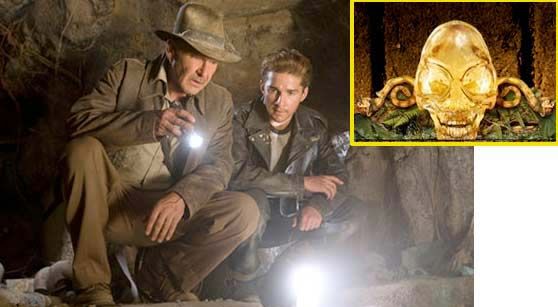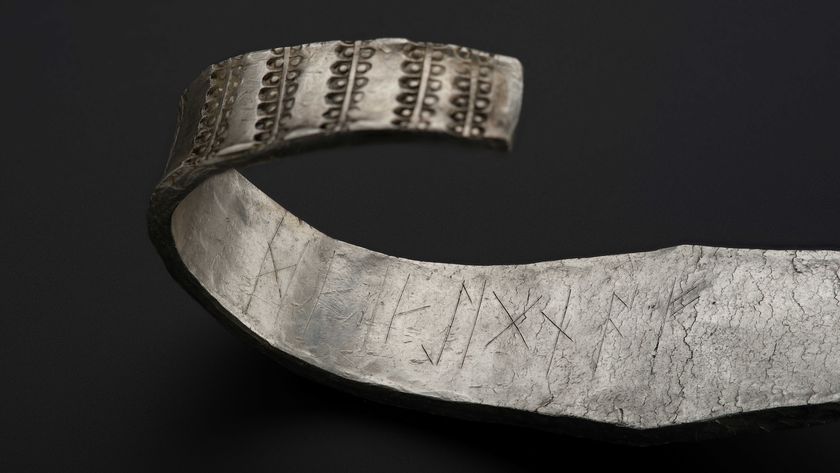Secrets of the Real Crystal Skulls

Indiana Jones returns May 22 in the long-anticipated film "Indiana Jones and the Kingdom of the Crystal Skull." Indy, of course, is not just a globetrotting adventurer but also an archaeologist.
In most of the Indiana Jones films, the stories by George Lucas involve some mysterious, long-lost artifact. In "Raiders of the Lost Ark," it was of course the Ark of the Covenant; in "Indiana Jones and the Last Crusade," it was the Holy Grail.
This time Indy battles menacing Russians who are after crystal skulls that have the ability to control people's minds. Yet while the Ark of the Covenant and the Holy Grail may be mythical, crystal skulls are quite real.
George Lucas has said in interviews that he's been interested in crystal skulls for many years. Here's an inside look at the real crystal skulls that inspired Indiana Jones's latest quest.
The mythology
There are many skulls in the world carved out of quartz, of varying sizes and designs, though not all of them are steeped in myth and romance. There are only a handful of the largest, life-size skulls in existence, and they have inspired awe for generations.
They are said to be hundreds of years old, and possibly of Mayan or Aztec origin.
Sign up for the Live Science daily newsletter now
Get the world’s most fascinating discoveries delivered straight to your inbox.
The skulls are indeed a sight to behold; I examined a glowing, clear skull in the Smithsonian for about 20 minutes, trying to tease out its secrets. Beyond the artistry of carved crystal, many believe the skulls have special abilities, such as aiding psychic abilities, healing the sick—or even power over death.
The Skull of Doom
Joe Nickell, in his book "Adventures in Paranormal Investigation," discusses one of the best-known crystal skulls, the so-called Skull of Doom. It was supposedly found in the 1920s at a lost Mayan ruin in Central America by an explorer named F. A. Mitchell-Hedges.
The skull, an impressive piece of quartz at almost 12 pounds, was rumored to have the power to kill: When a Mayan priest conducted arcane rituals and focused his concentration on the powerful relic, the skull could kill anyone at the priest's command.
Though dramatic, the story is as fictional as any Indiana Jones script. Nickell's research revealed that Mitchell-Hedges lied about where and when he got the skull, instead having purchased it from a collector many years after he claimed. There was also no evidence it held any special powers.
The science
And what does science say about the origins of the skulls? Doubts about the skulls' origins have circulated for decades. In 2005 an anthropologist at the Smithsonian examined several skulls and found that the cuts into the crystal unmistakably showed evidence of modern, not ancient, carving techniques. Not only were the cuts done with modern lapidary wheels, but the skulls themselves were polished with modern machinery.
Nickell, an expert on crystal skulls, concludes that "none of the famous skulls appears to be pre-Columbian; in fact, all of them may be European forgeries."
With such a track record, it's clear why those who own the crystal skulls often refuse to have them scientifically examined. It's better to preserve the mysterious (if not magical) aura around the skulls than to get a definitive (but negative) answer. Put another way, it's more fun to wonder if the skull was used centuries ago in some ancient civilization than to find out it was made fifty years ago in some carver's basement in Berlin.
Though the crystal skulls apparently have no supernatural abilities—healing, death, mind control, or otherwise—they do have one undeniable, proven quality: the power to fascinate.
Benjamin Radford, like George Lucas, has a longtime interest in crystal skulls. Also like Lucas, Radford is a filmmaker, but unlike Lucas he hasn't made a dime from his movies. His books and films can be found on his website.



